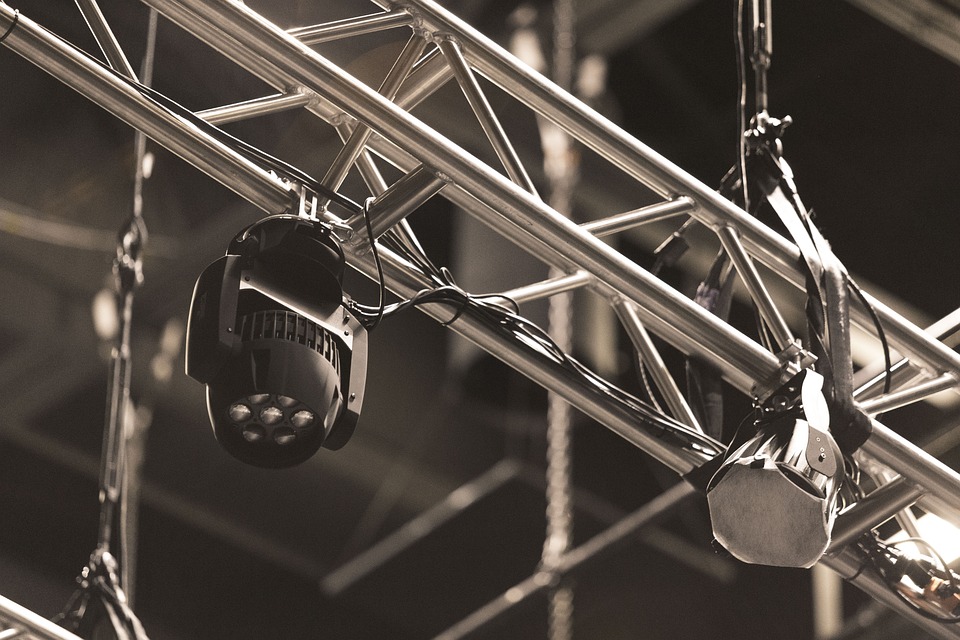Introduction
Filmmaking has come a long way since its inception, with advancements in technology continually pushing the boundaries of what is possible on the big screen. From the advent of sound to the rise of CGI, filmmakers have always looked for ways to bring their visions to life in new and innovative ways. As we look towards the future, there are a number of exciting innovations on the horizon that promise to revolutionize the way films are made and experienced. In this article, we will explore 10 groundbreaking innovations that are set to shape the future of filmmaking.
1. Virtual Production
Virtual production is a technique that combines traditional filmmaking with virtual reality technology to create realistic and immersive environments. By using virtual sets and digital characters, filmmakers are able to visualize complex scenes and settings in real-time, allowing for greater creative freedom and more efficient production.
Advantages of Virtual Production
– Reduced costs: Virtual production can significantly reduce production costs by eliminating the need for physical sets and locations.
– Enhanced creativity: Filmmakers can explore new and imaginative worlds that would be impossible to create using traditional methods.
– Faster turnaround: Virtual production allows for instant feedback and adjustments, leading to quicker turnaround times for production.
2. Artificial Intelligence
Artificial intelligence (AI) is increasingly being used in filmmaking to streamline the production process and enhance creative capabilities. AI algorithms can analyze scripts, predict box office performance, and even generate dialogue for characters. As AI technology continues to advance, filmmakers will have access to powerful tools that can help them bring their vision to life in new and exciting ways.
Applications of AI in Filmmaking
– Script analysis: AI algorithms can analyze scripts to identify potential issues and suggest improvements.
– Predictive analytics: AI can be used to predict box office performance based on factors such as genre, cast, and release date.
– Dialogue generation: AI can generate realistic dialogue for characters based on their personalities and motivations.
3. Blockchain Technology
Blockchain technology is a decentralized and secure way to store and transfer data, making it an ideal tool for filmmakers looking to protect their intellectual property and streamline the distribution process. By using blockchain technology, filmmakers can securely manage rights and royalties, track distribution channels, and ensure that content is not pirated.
Benefits of Blockchain for Filmmakers
– Secure distribution: Blockchain technology provides a secure and transparent way to distribute content, reducing the risk of piracy.
– Royalty management: Filmmakers can use blockchain to track royalties and ensure that all stakeholders are fairly compensated.
– Smart contracts: Blockchain technology enables the use of smart contracts, which can automate royalty payments and licensing agreements.
4. Virtual Reality and Augmented Reality
Virtual reality (VR) and augmented reality (AR) have the potential to revolutionize the way films are made and experienced. By using VR and AR technology, filmmakers can create immersive experiences that blur the line between reality and fiction, allowing audiences to step inside the world of the film like never before.
Advantages of VR and AR in Filmmaking
– Immersive storytelling: VR and AR technology allow filmmakers to immerse audiences in the world of the film, creating a more engaging and interactive experience.
– Enhanced visual effects: VR and AR technology can be used to create stunning visual effects that were previously impossible to achieve.
– New storytelling techniques: VR and AR open up new possibilities for storytelling, allowing filmmakers to experiment with non-linear narratives and interactive elements.
5. Deep Learning for Visual Effects
Deep learning is a branch of artificial intelligence that uses neural networks to process and analyze visual data. In filmmaking, deep learning can be used to create realistic visual effects, such as facial animation and object recognition. By using deep learning algorithms, filmmakers can enhance the quality and complexity of their visual effects, leading to more immersive and visually stunning films.
Benefits of Deep Learning for Visual Effects
– Realistic animation: Deep learning algorithms can create lifelike animations that accurately capture the nuances of human movement and expression.
– Object recognition: Deep learning can be used to automatically detect and track objects in a scene, making it easier to integrate visual effects into live-action footage.
– Enhanced creativity: Deep learning enables filmmakers to push the boundaries of visual effects, creating new and innovative techniques for storytelling.
6. 5G Technology
5G technology is set to revolutionize the way films are distributed and consumed, offering faster speeds and lower latency than current networks. With 5G, filmmakers can stream high-quality content to audiences around the world in real-time, making it easier to reach a global audience and connect with fans in new and exciting ways.
Advantages of 5G for Filmmakers
– Real-time streaming: 5G technology enables filmmakers to stream high-quality content to audiences in real-time, eliminating the need for downloads or buffering.
– Global reach: With 5G, filmmakers can reach a global audience more easily, expanding their reach and connecting with fans around the world.
– Enhanced interactivity: 5G technology opens up new possibilities for interactive content, allowing filmmakers to engage with audiences in innovative ways.
7. High Dynamic Range (HDR) Imaging
High Dynamic Range (HDR) imaging technology offers filmmakers the ability to capture and display a wider range of colors and brightness levels than traditional imaging technologies. By using HDR, filmmakers can create more vibrant and lifelike images that enhance the visual impact of their films.
Benefits of HDR Imaging
– Enhanced visual quality: HDR imaging technology produces images with greater detail, contrast, and color accuracy, resulting in a more immersive viewing experience.
– Cinematic realism: HDR allows filmmakers to capture scenes with greater fidelity to how they appear in real life, creating a more natural and lifelike look.
– Creative freedom: HDR technology gives filmmakers greater control over the visual style and tone of their films, allowing them to experiment with new and innovative looks.
8. Cloud-Based Collaboration
Cloud-based collaboration tools are becoming increasingly popular in the film industry, allowing filmmakers to work together remotely and share resources in real-time. By using cloud-based platforms, filmmakers can collaborate on projects more efficiently, streamline the production process, and reduce costs associated with traditional workflows.
Advantages of Cloud-Based Collaboration
– Remote collaboration: Cloud-based tools enable filmmakers to work together from anywhere in the world, facilitating collaboration between studios, artists, and production teams.
– Real-time updates: Cloud-based platforms provide instant access to project files, allowing filmmakers to make changes and share updates in real-time.
– Cost-effective: Cloud-based collaboration tools can reduce costs associated with physical storage, equipment, and travel, making it easier for filmmakers to work on a budget.
9. Quantum Computing
Quantum computing is a cutting-edge technology that offers significantly faster processing speeds and greater computational power than traditional computers. In filmmaking, quantum computing can be used to generate complex visual effects, simulate realistic physics, and optimize production workflows. As quantum computing continues to advance, filmmakers will have access to powerful new tools that can help them bring their creative visions to life.
Applications of Quantum Computing in Filmmaking
– Visual effects rendering: Quantum computing can dramatically reduce rendering times for complex visual effects, allowing filmmakers to create more detailed and realistic scenes.
– Simulation and modeling: Quantum computing can be used to simulate physical phenomena, such as fluid dynamics and particle interactions, to create more realistic and immersive environments.
– Optimization algorithms: Quantum computing can optimize production workflows, scheduling, and resource allocation, helping filmmakers streamline the production process and reduce costs.
10. Interactive and Immersive Experiences
Interactive and immersive experiences are becoming increasingly popular in the film industry, allowing audiences to engage with content in new and exciting ways. By using interactive technology, filmmakers can create experiences that respond to audience input, making each viewing unique and engaging. From virtual reality experiences to interactive installations, filmmakers are exploring new ways to captivate audiences and push the boundaries of storytelling.
Benefits of Interactive and Immersive Experiences
– Audience engagement: Interactive experiences encourage audiences to actively engage with content, creating a more immersive and memorable viewing experience.
– Personalized storytelling: Interactive technology allows filmmakers to tailor content to individual preferences, creating a more personalized and engaging experience for viewers.
– Innovation: Interactive and immersive experiences push the boundaries of traditional storytelling, allowing filmmakers to experiment with new formats and techniques to engage audiences in new and exciting ways.
Conclusion
As technology continues to advance, the future of filmmaking looks brighter and more exciting than ever. From virtual production and artificial intelligence to blockchain technology and interactive experiences, filmmakers have a wealth of innovative tools at their disposal to bring their creative visions to life. By embracing these groundbreaking innovations, filmmakers can push the boundaries of storytelling and create truly unforgettable cinematic experiences for audiences around the world. The future of filmmaking is here, and the possibilities are endless.



